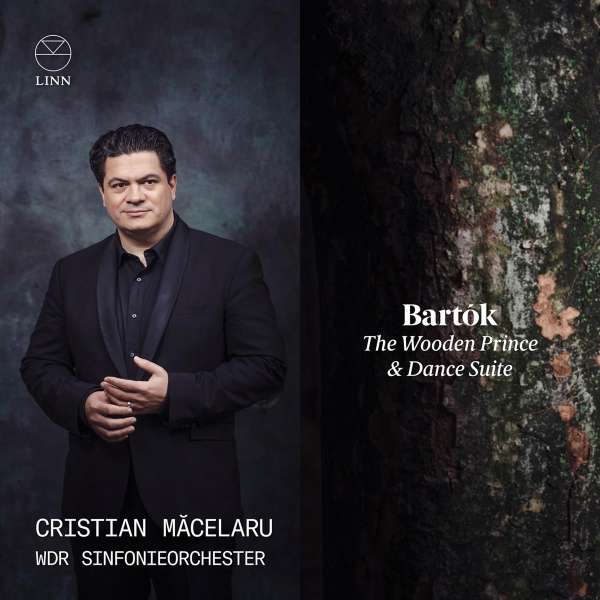Bela Bartok hat nur drei Bühnenwerke geschrieben: die einaktige Oper A Keksakallu herceg varo, das Ballett Der wunderbare Mandarin und die Pantomime Der holzgeschnitzte Prinz. Dieses Tanzspiel wurde 1917 in Budapest uraufgeführt. Die Figur des Holzprinzen verhilft ihrem Schöpfer, dem Prinzen, zu seinem Ziel, nämlich die Liebe der Prinzessin zu gewinnen.
In der Interpretation des WDR-Orchesters entwickeln sich die großen Spannungsbögen organisch, und die Musik blüht in ihrer ganzen Farbenpracht auf. Knisternde Spannung und viel federnde Flexibilität im Klang sind weitere Charakteristika. Macelaru und seine Musiker bleiben der Naturschilderung nichts schuldig, obwohl der Dirigent die Nähe zum Impressionismus weniger herausstreicht als Pierre Boulez in seiner Aufnahme bei DG. Wagner oder Strauss geben da schon eher Berührungsunkte her.
Nicht weniger eindrucksvoll ist die Tanz-Suite für Orchester, ein Auftragswerk von 1923 zur Feier der 50-jährigen Vereinigung von Buda, Obuda und Pest. Hierin verbindet Bartok Tanzsätze aus verschiedenen Gegenden. Man hat diese Suite schon leichter und beschwingter gehört als in dieser Interpretation. Die Stimmungen sind nicht ganz so aufgehellt und insgesamt ist die Musik expressiver als man sie oft gehört hat. Dadurch passt sie auch sehr gut zum Holzgeschnitzten Prinzen.
Die Tonaufnahme ist hervorragend, gut in der Disposition, präsent und klar und doch räumlich und gut ausbalanciert.
Bela Bartok wrote only three stage works: the one-act opera A Keksakallu herceg varo, the ballet The Miraculous Mandarin, and the pantomime The Wooden Prince. This work was premiered in Budapest in 1917. The figure of the Wooden Prince helps its creator, the prince, to achieve his goal, namely to win the love of the princess.
In the interpretation of the WDR Orchestra, the great arcs of tension develop organically, and the music blossoms in all its colorful splendor. Crackling tension and much springy flexibility in the sound are further characteristics. Macelaru and his musicians owe nothing to the depiction of nature, although the conductor emphasizes the proximity to Impressionism less than Pierre Boulez in his recording on DG. Wagner or Strauss are more likely to provide points of contact.
No less impressive is the Dance Suite for Orchestra, commissioned in 1923 to celebrate the 50th anniversary of the unification of Buda, Obuda and Pest. In it Bartok combines dance movements from different areas. One has heard this suite lighter and more upbeat than in this interpretation. The moods are not quite as lightened and overall the music is more expressive than one has often heard. As a result, it also fits the Wooden Prince very well.
The sound recording is excellent, good in disposition, present and clear yet spacious and well balanced.


















